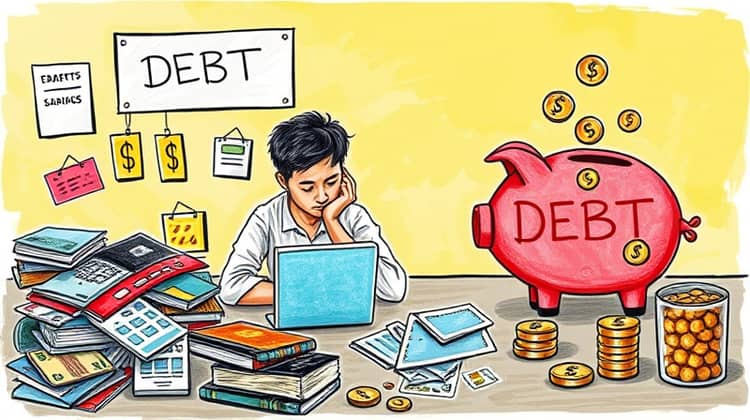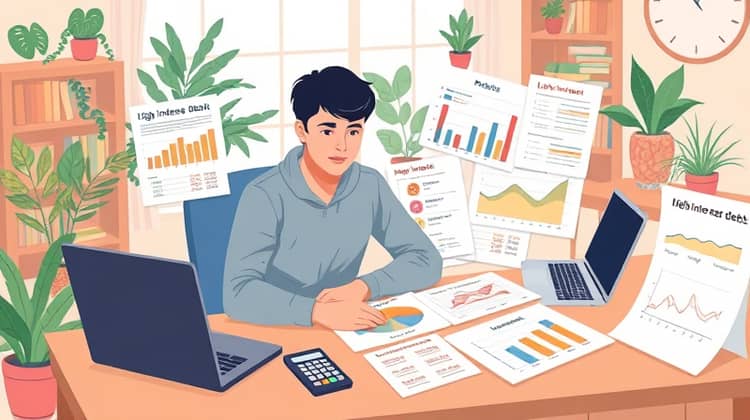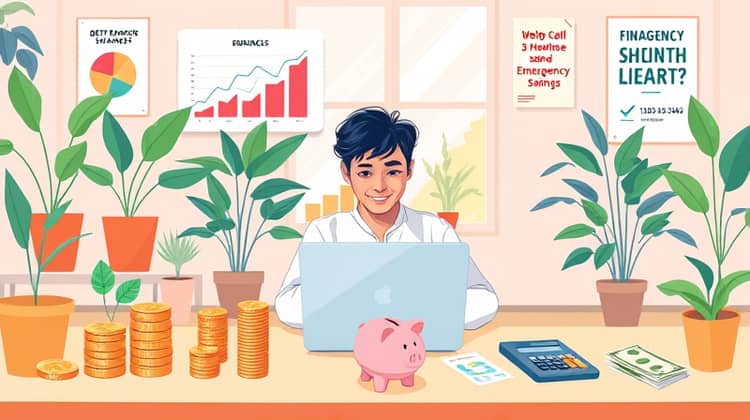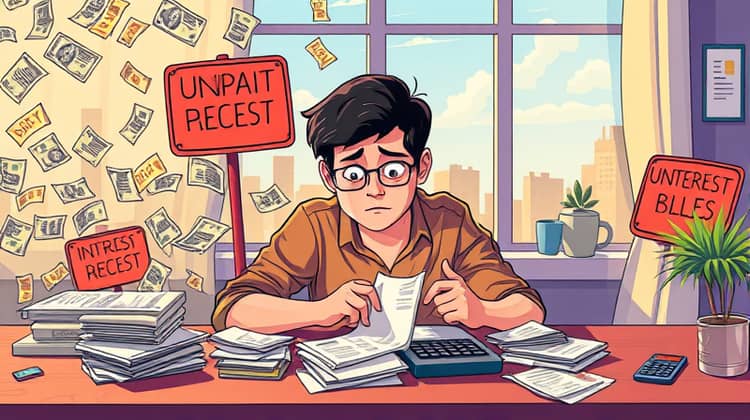Debt vs. Emergency Savings: How to Decide What Comes First

Managing personal finances can often feel like walking a tightrope between handling debts and saving for emergencies. With rising costs of living and fluctuating financial stability, understanding where to put your money can make a significant difference in your financial health. In this article, we will explore the factors to consider when deciding whether to prioritize debt repayments or emergency savings, helping you to make informed financial decisions based on your unique circumstances.
First, we’ll lay out the basics of both concepts: debt and emergency savings. Following this, we will assess different types of debts and their respective interests, discuss the critical importance of having emergency savings, and outline various factors to consider. By the end of this article, you will have a clearer view of how to approach these two vital aspects of your financial life.
Understanding the Basics

Debt can be a significant part of many people’s lives, manifesting in various forms such as credit cards, loans, and mortgages. Understanding the nature of your debt is the first step towards managing it effectively. The interest rates associated with debt play a huge role in determining whether you should focus on paying it down or setting aside savings.
On the other hand, emergency savings serve as a financial safety net during unexpected situations like job loss, medical emergencies, or home repairs. Financial experts often recommend having 3 to 6 months' worth of expenses saved to cushion against sudden financial shocks.
- Debt can accumulate and lead to financial stress if not managed wisely.
- Emergency savings are crucial for financial security and peace of mind.
Recognizing the importance of both debt management and emergency savings can help you create a balanced financial strategy. It's essential to evaluate your unique financial situation to make the best choice for your needs.
Assessing Your Debt

Before deciding whether to allocate funds toward paying down debt or building emergency savings, it is essential to assess your current debt situation. Start by taking a comprehensive look at all the debts you owe, including the total amounts, interest rates, and minimum monthly payments. This will give you a clear picture of your overall financial obligations.
Next, categorize your debt into high-interest and low-interest categories. Each type of debt has different implications for your finances, and understanding these can aid in prioritizing your payments. For example, high-interest debt can quickly snowball, making it more pressing to address before it becomes unmanageable.
Once you have a clear understanding of your debts, you can better determine how to allocate your financial resources to set yourself up for success in the long run.
High-Interest Debt
High-interest debt, such as credit card debt, is often prioritized first due to its compounding nature. When interest rates are high, the cost of borrowing increases, making it easier for the total balance to snowball if not addressed quickly.
The longer high-interest debt remains unpaid, the more challenging it can become to manage, potentially leading to a cycle of debt that can feel overwhelming. Thus, focusing on paying down high-interest debt can clear financial pressures and save money in the long run.
This approach can provide psychological benefits as well, alleviating stress related to debt and improving overall financial well-being. As you make significant strides in reducing this type of debt, you may find yourself more motivated to tackle any remaining financial obligations.
Low-Interest Debt
Low-interest debt, commonly found with student loans or mortgages, may not need the same immediate attention as high-interest debt. Since these debts accumulate interest at a slower pace, you might choose to commit less urgency to paying them down.
That said, it’s still important to continue making regular payments and avoid falling behind. Low-interest debt can nonetheless become burdensome if neglected, so create a payment strategy that fits your budget and allows for steady progress.
The Importance of Emergency Savings

Emergency savings are vital for financial resilience. They provide a buffer against the unexpected, preventing you from falling into further debt when life throws a curveball. As life can be unpredictable, having savings set aside can help cover unplanned expenses, support you during job transitions, or assist with necessary, yet unexpected repairs.
Establishing an emergency fund can greatly lower financial anxiety and improve your decision-making. You can approach purchases and investments with a clearer mind and confidence, knowing that you have a safety net to fall back on if needed.
- Set a specific savings goal based on your monthly expenses.
- Consider opening a dedicated savings account to separate your emergency fund from everyday spending.
- Regularly contribute a portion of your income to build this fund over time.
Creating a habit of saving will enhance your financial security and stability in the long run.
Factors to Consider

When debating between tackling debt and building your emergency savings, consider your unique financial situation, including your current income, expenses, and financial obligations. Additionally, evaluate your ability to maintain a balanced budget and create a plan that allows for both payments and savings. Establishing priorities based on your risk tolerance is key; for some, it might be better to focus on high-interest debt, while for others, building a safety net could feel more crucial.
Another critical factor is examining interest rates. If the interest on your debts exceeds what you could earn in a savings account or investment, it may be more beneficial to focus on debt repayment.
- Evaluate your financial stability and job security.
- Analyze the interest rates of your debts versus potential savings growth.
- Consider your personal stress levels related to debt versus financial security.
Ultimately, a tailored approach based on your specific needs will yield the best results.
Creating a Hybrid Approach

A hybrid approach merges both strategies, allocating funds toward debt repayment while also building your emergency savings at the same time. Many find this balanced method to be effective, particularly if they can manage their budget to accommodate both priorities. This way, you aren’t sacrificing your financial security for merely paying off debt.
By making small contributions to your emergency fund alongside regular debt payments, you can maintain a sense of stability while actively working toward clearing debts.
- Allocate a portion of your paycheck to debt payments.
- Set aside a small percentage for your emergency fund.
- Continuously reassess your strategy as your situation changes.
By fostering a responsive plan, you can adjust priorities based on life events and ensure that both your debts and savings grow steadily.
When to Focus on Debt

There are specific circumstances where focusing on debt repayment becomes critical. If high-interest debts dominate your financial landscape, prioritizing them is usually the best strategy. As they accrue interest rapidly, not addressing them could lead to more significant financial difficulties in the future.
Another time to focus on debt is if you’re feeling overwhelmed or stressed by monthly payments. Reducing debt can enhance your peace of mind, allowing for better financial decision-making across all areas of life.
- If high-interest debts are taking up a significant portion of your budget.
- When stress related to finances is impacting your quality of life.
Recognizing when to focus on debt can significantly improve your overall financial well-being.
When to Focus on Emergency Savings

In contrast, there are moments when the right choice is to emphasize building your emergency fund. If you don't have any savings at all, it's unwise to pursue aggressive debt repayment strategies, especially if high-interest loans or credit cards are less of a concern at that moment.
When facing potential job instability or upcoming expenses, focusing on building an emergency reserve can provide a crucial cushion as you navigate these uncertainties.
- If you currently have no savings to rely on for emergencies.
- When your job security is in question or facing uncertain changes.
In these situations, enhancing your savings should take precedence to ensure long-term financial sustainability.
Conclusion

Deciding whether to focus on debt repayment or building emergency savings requires thoughtful consideration of your unique financial circumstances. Understanding the nuances of your debts, as well as the importance of having savings, is crucial to making the best decision for you.
By evaluating your income, expenses, and potential risks, you can develop a balanced financial strategy that addresses both concerns effectively. Being proactive in your financial planning can lead you toward greater peace of mind and stability in the long run.






